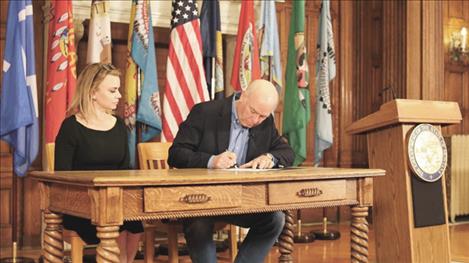Broadband investment to close digital divide authorized
Hey savvy news reader! Thanks for choosing local.
You are now reading
1 of 3 free articles.
News from Mountain States Policy Center
Public dollars should always be spent wisely and efficiently, especially on infrastructure that touches nearly every home, school, and business. That’s why Montana Governor Gianforte is happy to see President Trump’s move to slash red tape in the Broadband Equity Access and Deployment (BEAD) program.
In June, Governor Gianforte praised the new federal guidelines that eliminate “needless obstacles” that the previous administration had put in place. This policy shift makes it easier for Montana to use its $629 million in BEAD funds more efficiently and effectively, particularly in the state’s unserved and underserved areas.
Congress established the BEAD program in 2021, marking it as the biggest broadband investment in the history of the United States. It was supposed to offer states the resources and tools they need to close the digital divide. However, for many states, the path was stifled by federal regulations that often limited flexibility and proved an obstacle to controlling costs. In Montana, that has translated to longer timelines, higher prices, and fewer local solutions.
That’s changing now.
Montana and other states are no longer required to favor only one type of broadband technology, whether it be fiber, cellular, or wireless, under new “Benefit of the Bargain” guidelines issued by the U.S. Department of Commerce. Rather, they are directed to explore all alternative technologies, such as wireless, satellite, and fixed-wireline technology. This tech-neutral approach allows states to concentrate on outcomes.
As Governor Gianforte observed, with this reform, “...the Montana Broadband Office can now get the right technology at the best price to implement this historic investment...” That kind of flexibility is essential in a state with challenging geography and vast distances between communities.
Getting rid of onerous rules does not mean getting rid of accountability. It is allowing states to design broadband solutions that fit their communities, avoiding one-size-fits-all mandates from Washington, D.C.
This plan will help allow the dollars for broadband to go further and flow faster. It also provides an example for other states that are going through their implementation of BEAD. Getting rid of federal red tape is a good start. Freeing states up to make the best decisions for their communities most efficiently and effectively is how we will best close the digital divide.
Montana’s efforts are on track with many of the key principles promoted by Mountain States Policy Center. As states receive billions in BEAD dollars and other federal broadband grants, it’s crucial they resist the temptation to build government-owned networks or adopt one-size-fits-all models pushed by Washington, D.C.
Instead, policymakers should focus on tech-neutral, market-driven solutions that encourage innovation, foster private-sector competition, and avoid long-term public liabilities.
















